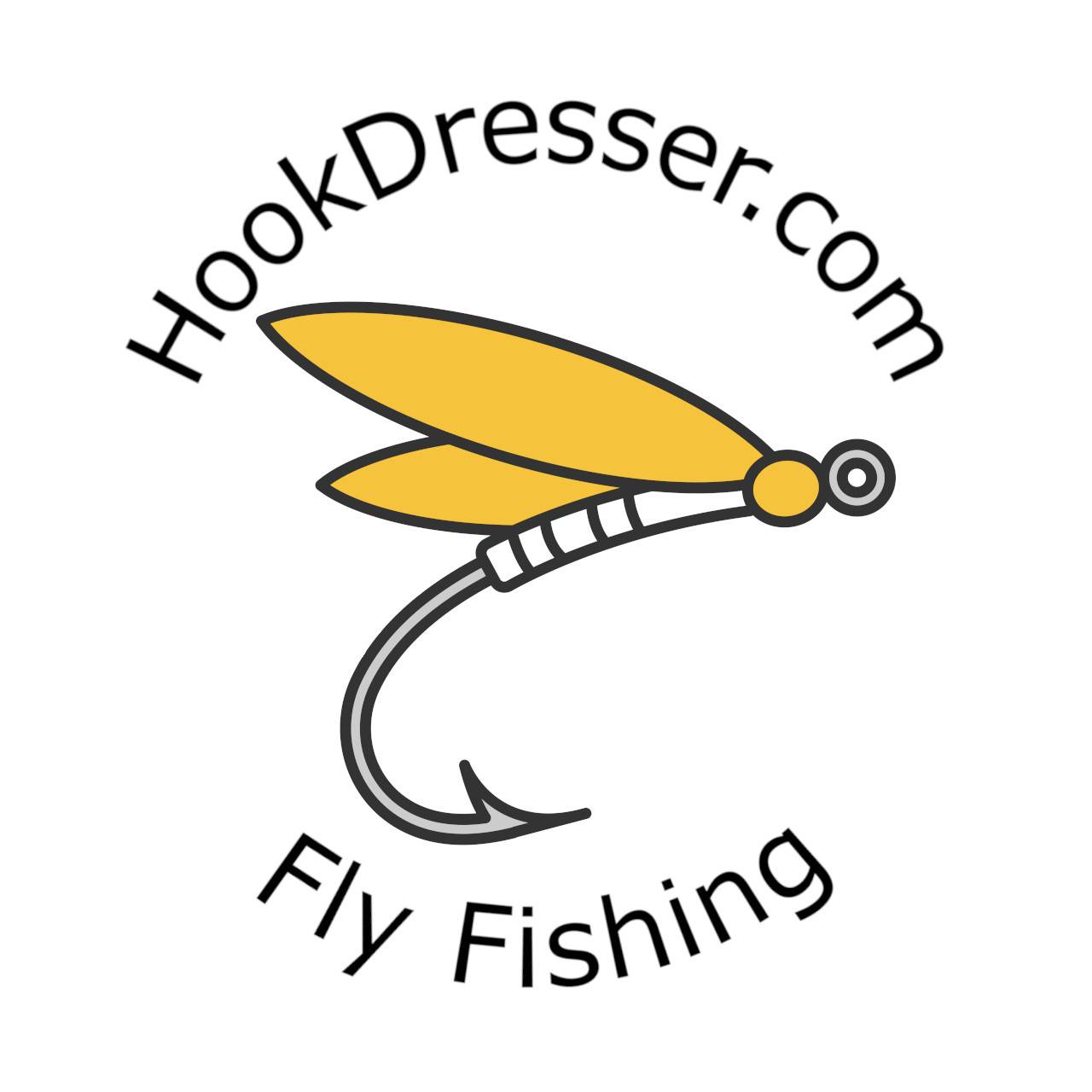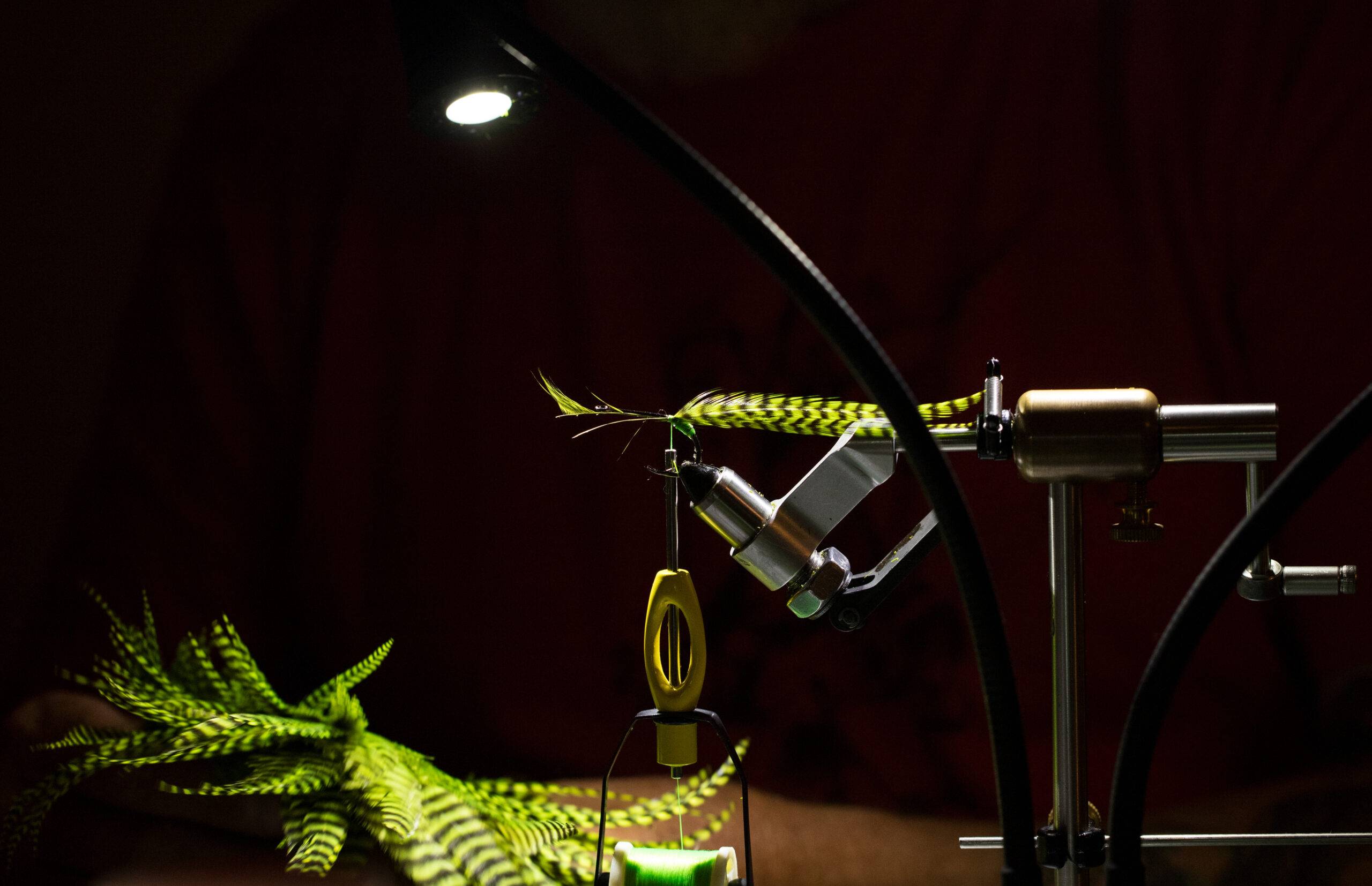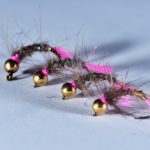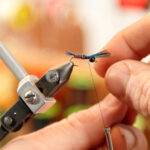If you are a fly fisherman, fly tying is a worthwhile hobby to pursue. Especially in the winter months when the winter is gloomy and the fish are feeding less. Tying your own flies at home can be a great way to prepare for the fishing season ahead.
In this article we will outline the basic fly tying tools, fly tying threads, hooks as well as some fly tying material kits you will need to get started. We will also cover a few easy flies to tie for beginners.
I will show you how you can get started in fly tying the right way, avoiding unnecessary mistakes, and saving money along the way.
What tools do I need to start fly tying?
You will need the following tools to get started in fly tying:
- Vice
- Bobbin holder
- Scissors
- Whip finisher
- Hackle pliers
- Bodkin/dubbing needle
The fly tying vise holds the hook securely and is an essential tool for fly tying.
The bobbin holds your fly tying thread making it easy to apply to the hook. A good bobbin holder will be loose enough to apply the thread with ease and tight enough that when you let go of the bobbin holder it will not fall. It should hold its place.
The fly tying thread binds all the materials that make up the fly together.
Scissors are an essential part of the fly tier’s toolkit. I recommend having two pairs of fly tying scissors, one sharp fine pair for getting close to the hook and cutting soft materials. A second pair of scissors that are heavy duty and capable of cutting wire and other tough materials that would otherwise blunt the fine scissors.
The whip finisher tool is used to create the finishing knot at the end of the tying process. Using the whip finisher applies a strong knot that adds durability to your flies. To make your flies even more durable you can apply a drop of varnish or bug bond to the head of your fly.
The bodkin, also known as a dubbing needle, is used to apply glue and varnish to your fly. The bodkin can also be used to pick out materials on the hook such as dubbing thereby giving the fly more volume by making it look fluffier. The dubbing needle can also be used to clear the eye of a hook that has been filled with varnish.
Hackle pliers allow you to easily grip a feather as you make winding wraps of the hook with the feather. While you can use your fingers if you do not have hackle pliers, you may snap the feather if you are not careful.
Starting fly tying will require these basic essential tools. As you progress in your fly tying hobby you might add other tools such as a hair stacker. You might even buy a fly tying tool kit that will come with all the necessary tools to tie flies.
The Fly Vise
There are a number of fly tying vises available to fly tiers. Choosing the right fly tying vise can be a difficult task for beginners.
The fly tying vise you choose is an important decision to make. While you may choose to buy an affordable vice, if you are to take up fly tying as a serious hobby you will quickly outgrow the less expensive vice and will want to upgrade to a better vise.
If you are likely to upgrade it in the future for one that has all the features of a good vise, I recommend you buy a good vise from the outset. That way, you will have no need to upgrade later in your fly tying hobby.
I recommend buying a good vice from the outset. Cheap vices are not rotary, you will not be able to observe your fly from all angles. Hooks have a tendency to slip in cheaper vises. This can be frustrating for anyone tying a fly and lead to wasted time and distractions that would be better put to fly tying.
Save yourself the hassle and buy a good vise! If you buy the right vise, with proper care, it can last a decades if not a lifetime. Over the course of your fly tying career it will end up being a small investment as your cost of materials will eventually become greater than the cost of your vise.
Fly Tying Tools
There are several different affordable quality tool kits that, when paired with a fly tying vise, will offer a complete package for getting started in fly tying.
These kits come in cases that make them easy to put away after use. This is especially helpful if you do not have a dedicated fly tying area.
I highly recommend the Dr Slick Fly Tying Tool Kit. It is one of the highest quality fly tying tool kits available and the tools are built to last. The kit includes a whip finisher, a bodkin, bobbin holder, bobbin threader, hair stacker, scissors, hackle pliers. The tools case can also be used as a fly box.
Another high quality tool kit I would recommend as an alternative to Dr Slick is the Loon Outdoors Core Fly Tying Tool Kit. Although it comes with fewer tools, they are ergonomically designed. The tools in the kit include a whip finisher, scissors, a bodkin, bobbin holder and hackle pliers. The kit also comes in a sturdy plastic case. If you want an upgraded version of this kit I would recommend Loon Outdoors’ Complete Fly Tying Kit.
If you are looking for a cheaper tool kit, I would recommend the XFISHMAN Fly Tying Tool Kit. It contains 12 different tools to get you started including straight and curved scissors. Importantly, the bobbin holders have a ceramic tip which will prevent the grooves that develop in metal tipped bobbin holders over time. The tools are easily stored in a zip pouch.
You can also buy each tool individually to put your own kit together. My article on what flying tying tools do will walk you through putting your own tool set together.
Fly Tying Thread
While some fly tying kits come with thread many do not. I use Uni thread to tie my flies but there are several other brands of fly tying thread available. You can try out the different kinds to see which you prefer.
Thread is important as it binds together the different materials that make up your fly. Fly tying thread comes in different sizes. It is important to get the right sized thread for the size of fly your are making.
The most common method of sizing threads is through the denier sizing system. The most common fly tying thread sizes are 70, 140, 210 and 280 denier (from smallest to largest). For flies size 14 or smaller, use 70 dernier thread to tie the fly. For flies with a hook size of 6-14, use a 140 dernier size thread while for larger flies, use a thread size of 210 or 280.
Finer threads are best used for small flies, while thicker threads are more suited to making large flies. By using thicker threads for larger flies, the thicker threads will be better at withstanding the teeth of larger fish. Also, by using appropriately sized threads on the flies you are tying, you will ensure you do not waste thinner threads on large flies. Although fly tying thread is not expensive, there is no need to use more thread than you need to use.
On the other hand, using a thread that is too thick for the hook will result in a fly that is too bulky for the size of hook you are using.
If you are tying flies to fish for trout, the most common sizes of thread you will use are between 70 and 140 denier.
The thread you will use the most is black thread; you should get black thread in 70 and 140 denier size. Fly patterns also call for brown, olive, and red thread. You can also add different colored threads. There are several beginner fly patterns that have a thread body. By having different colored threads, you will be able to tie these flies in various colors.
Hooks
What flies should beginners tie?
Easy flies for beginners to tie include spiders, midge, or buzzer flies.
Beginners should start their fly journey with flies that are very basic. If you start with flies that are too hard for your current level of fly tying, it can easily lead to frustration.
Therefore, I recommend tying simple flies that are not only easy for beginners to tie but, importantly, will catch fish. This will show you that you can catch fish on simple fly patterns which will increase your confidence in your fly tying.
As your skill in fly tying progresses, you will be able to add more fly tying techniques to your flies and move on from the beginner flies to create more advanced fly patterns.






